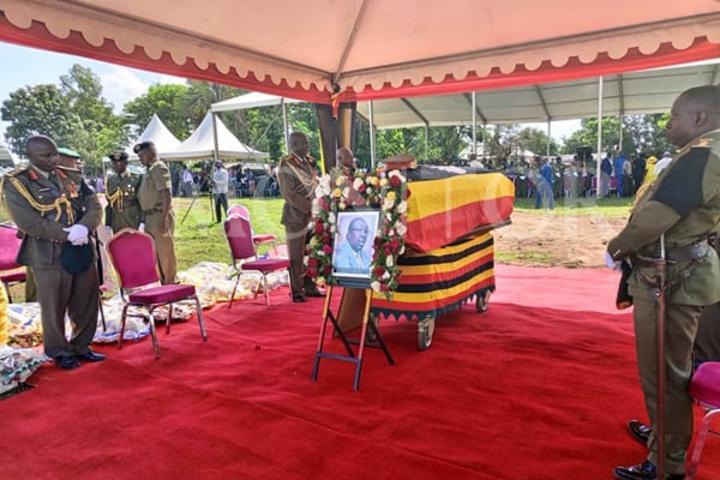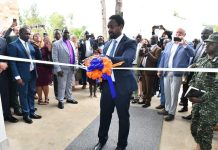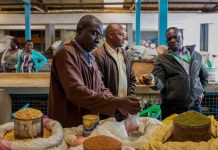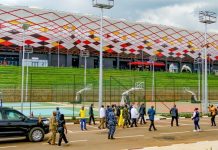Africa-Press – Uganda. A blood compensation has been instituted for Col Charles Okello Engola Macodwong, the fallen junior Labour minister’s, family has revealed.
Mr Sam Engola, the Tikokin clan head, told Monitor that “some progress” has been made after President Museveni “made a position on that matter once he heard of it.”
He revealed: “They told us that after the burial we will form a team and meet him at the Ministry of Defence headquarters. We also met the President in Otuke where he reiterated the same thing.”
Mr Engola, also said a team had been formed to engage President Museveni about the blood compensation.
“We did not discuss the exact quality of animals for payment in compensation because we met him in public,” he said of the briefing meeting in Otuke.
During his state funeral at Kololo Ceremonial Grounds, President Museveni said Col Engola’s killing “is a very big embarrassment for the army.”
The President wondered how “somebody from you whom you deployed to guard a useful cadre ended up killing him.” The army, he added, “must accept full responsibility.”
“The people to do kayo cuk (blood compensation) are the army,” he offered, “…don’t worry about the seven cows. The army has got more cows …”
At the ceremony, the fallen minister’s son said the family had forgiven their father’s assassin—late Pte Wilson Sabiiti.
“As children of the late Engola, we acknowledge that the greater part of the family is doing something else to seek justice for him but as children of the late Engola, we take this opportunity to forgive Sabiiti,” Mr Samuel Engola Junior, his son, said.
Sabiiti’s corpse
On May 2, Pte Sabiiti shot dead Col Engola before taking his own life. By Friday, Sabiiti’s family had not yet received his body from the Uganda People’s Defence Forces (UPDF) for burial in Mubali Village, Kijura Town Council in Kabarole District.
Col Engola’s kin, who spoke to Monitor, said the army was responsible for withholding Sabiiti’s body.
“The family already forgave Sabiiti, and, in our case, we cannot keep his body,” Mr Zerubabel Opio Okori, the Adok clan chief, revealed, adding: “We have no authority to withhold his body. It is up to the army to explain what they are still doing with his body.”
Mr Opio said they only have a case against the government from whom they demand compensation since Sabiiti acted while on duty and used a government weapon to kill their son. Sabiiti’s family, the Adok clan chief revealed, “owes us nothing.”
Repeated attempts to speak to the army spokesman, Brig Felix Kulayigye, about the fate of Sabiiti’s corpse were futile.
Brig Kulayigye had, however, told this publication on Wednesday that investigations were still ongoing.
“A body of inquiry headed by Col Abdul Rugumayo, the deputy chief of military intelligence, was formed to investigate the murder,” Brig Kulayigye said.
Compensation ritual
In ruling out the blood compensation stalling the return of Sabiiti’s corpse, the Adok clan chief peeled back the layers on the process.
Mr Opio Okori said the compensation is accompanied by a ritual called Kayo-cuk. It is this ritual that the army will be subjected to.
“The compensation, in the context of the Lango tribe, is intended to unite and bring peaceful coexistence among the two families, clans or tribes whose member has killed or has been killed,” he revealed, adding: “It does not imply the actual value of a human being.”
According to the Lango culture, there must be a mandatory blood compensation made to the side whose member died once they are claimed by a kin or clansman/clanswoman.
The elders (party) of the deceased and those from the side of the culprit then sit down. A third clan or family is invited to witness and aid the mediation and negotiation until a win-win is arrived at.
“Since our forefathers used animals (cows) as a form of currency in the past, seven healthy cows were set as a standard amount for blood compensation and we have not changed that policy,” Mr Opio Okori said.
The actual ritual
Once the negotiation is successful and an agreement is reached, the side of the culprit hand over seven cows in the presence of the witness clan or family (irrespective of their sex) before the group performs the kayo-cuk ritual.
To perform the ritual, the culprit’s side picks another healthy and mature bull and hands it over beside the seven cows. The bull is jointly slaughtered by two representatives of both families and cut into two equal parts. One half is handed to the culprit’s side to eat, and the victim’s side takes the other half.
The bull’s liver is divided into two and roasted. Once the unsalted meal is ready, the culprit’s side moves to feed the victim’s side who also does the same in an exchange to symbolise brotherhood, unity and coexistence.
“On sharing the roasted liver, the offal is roasted and jointly eaten to symbolise that there would be no more fighting or enmity between the two sides,” Mr Opio Okori, the Adok clan chief, explained.
While all these processes are being undertaken, the deceased’s body is unburied.
“Once the culprit’s side acts stubborn and declines to heed the process, the elders perform a ritual to counter his acts but also swear revenge for their slain member,” Mr Opio Okori revealed, adding: “The ritual comes with critical mysterious and spiritual consequences and the revenge means the victim’s side will at one point attack and kill those from the culprit’s side.”
The seven cows in blood compensation, however, only apply to a culprit who belongs to a family or clan under the Lango tribe.
Once the culprit does not belong to any family or clan within the Lango tribe, the deceased’s family or clan decides any amount of animals in compensation.
For More News And Analysis About Uganda Follow Africa-Press






